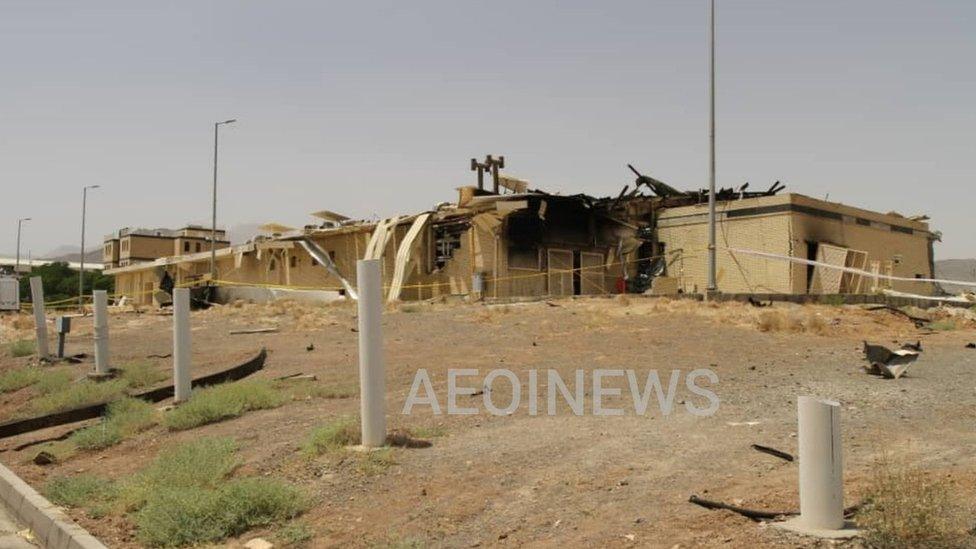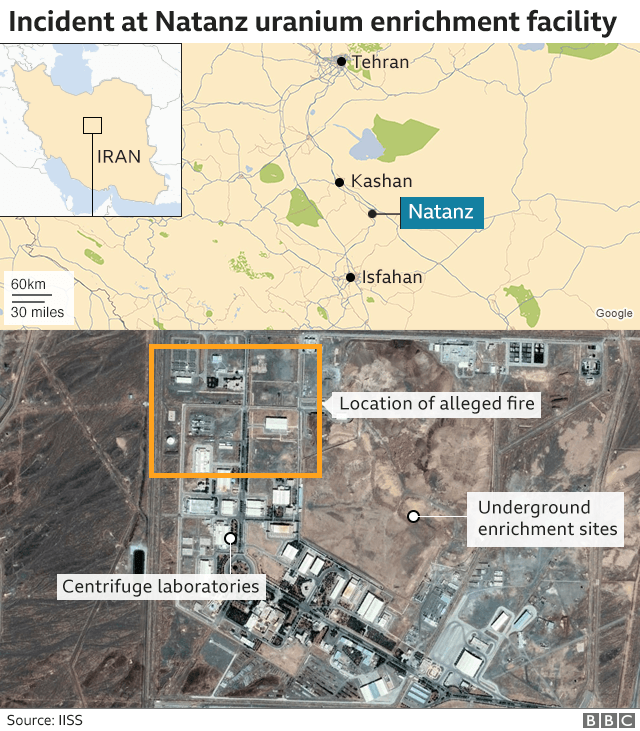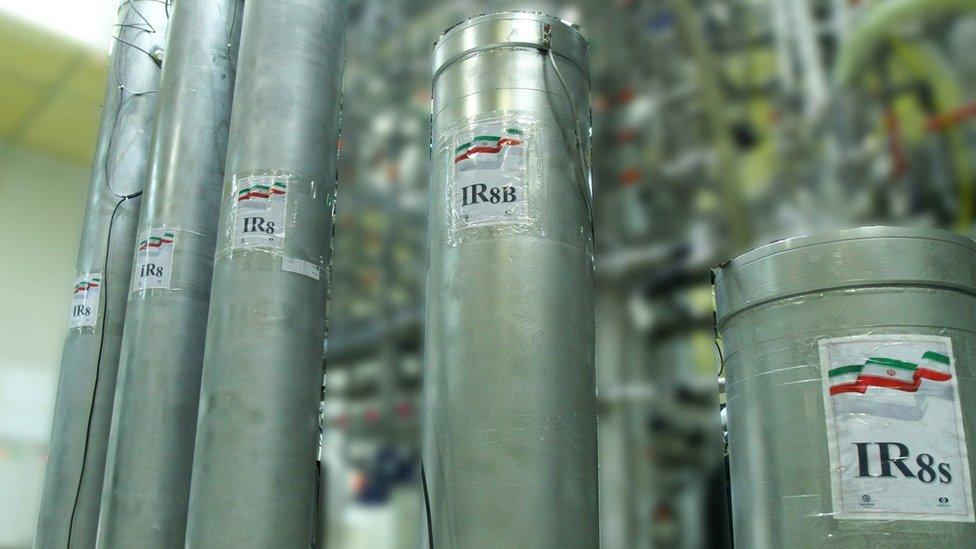Iran nuclear: 'Incident' at Natanz uranium enrichment facility
- Published

Iran's Atomic Energy Organisation released a photo purportedly showing the damaged building
A fire has reportedly damaged a building at a nuclear facility in Iran.
Atomic Energy Organisation of Iran (AEOI) spokesman Behruz Kamalvandi said there was an incident in "one of the industrial sheds under construction" at the Natanz uranium enrichment plant.
There were no fatalities or concerns about contamination, he added.
The AEOI later published a photo showing a partly burned building, external, which US-based analysts identified as a new centrifuge assembly workshop.
Centrifuges are needed to produce enriched uranium, which can be used to make reactor fuel but also nuclear weapons.
Allow X content?
This article contains content provided by X. We ask for your permission before anything is loaded, as they may be using cookies and other technologies. You may want to read X’s cookie policy, external and privacy policy, external before accepting. To view this content choose ‘accept and continue’.

Meanwhile, in a statement sent to BBC Persian journalists before the AEOI's announcement, an unknown group calling itself "Cheetahs of the Homeland" claimed it had attacked the building. The group said its members were part of "underground opposition with Iran's security apparatus".
The claim could not immediately be verified by the BBC.
Allow X content?
This article contains content provided by X. We ask for your permission before anything is loaded, as they may be using cookies and other technologies. You may want to read X’s cookie policy, external and privacy policy, external before accepting. To view this content choose ‘accept and continue’.

The International Atomic Energy Agency (IAEA), which monitors Iran's compliance with a 2015 nuclear deal struck with world powers, said it was aware of the reports from Natanz and currently anticipated no impact on its verification activities.
The incident comes six days after an explosion near the Parchin military complex.
The Iranian authorities said the blast was caused by "leaking gas tanks" at the site, but analysts said satellite photographs showed it happened at a nearby missile production facility, external.
Parchin, near Tehran, is where Western powers suspect Iran carried out tests related to nuclear warhead detonations more than a decade ago. Iran insists its nuclear programme is peaceful and denies that it sought to develop nuclear weapons.


Natanz, which is about 250km (155 miles) south of the capital Tehran, is Iran's largest uranium enrichment facility.
Mr Kamalvandi told Iranian media that Thursday morning's incident "took place in one of the industrial sheds being built in the open-air part of the Natanz site".
"There were no fatalities and no damage was done to the ongoing activities at the complex," he said.
"As the complex is not active, there is no concern about [radioactive] contamination. A team of experts of the AEOI are at the site investigating the reasons behind the incident," he added.
The governor of Natanz city, Ramazanali Ferdowsi, was later quoted by Tasnim news agency as describing the incident as a fire. Fire fighters and rescue teams were deployed to the site, he added.
The Natanz enrichment facility has three large underground halls capable of holding tens of thousands of centrifuges operating in cascades. Uranium hexafluoride gas is fed into them to separate out the most fissile isotope, U-235.
The 2015 nuclear deal saw Iran agree only to produce low-enriched uranium, which has a 3-4% concentration of U-235 and can be used to produce fuel for nuclear power plants. Weapons-grade uranium is 90% enriched or more.

In November, Iran unveiled advanced centrifuges at Natanz
Iran also agreed to install no more than 5,060 of the oldest and least efficient centrifuges at Natanz until 2026, and not to carry out any enrichment at its other underground facility, Fordo, until 2031.
Last year, Iran began rolling back these commitments in retaliation for US President Donald Trump's decision to abandon the nuclear accord and reinstate crippling economic sanctions lifted by his predecessor Barack Obama.
In November, Iran said it had doubled the number of advanced centrifuges being operated at Natanz and begun injecting uranium hexafluoride gas into centrifuges at Fordo.
- Published30 April 2021
